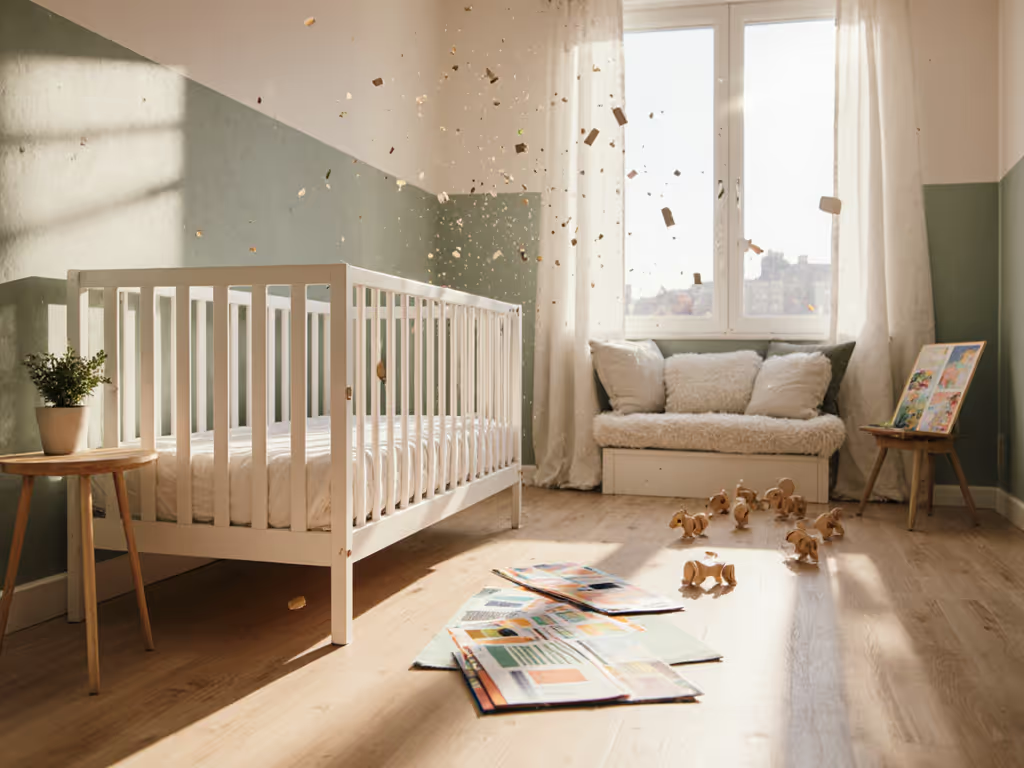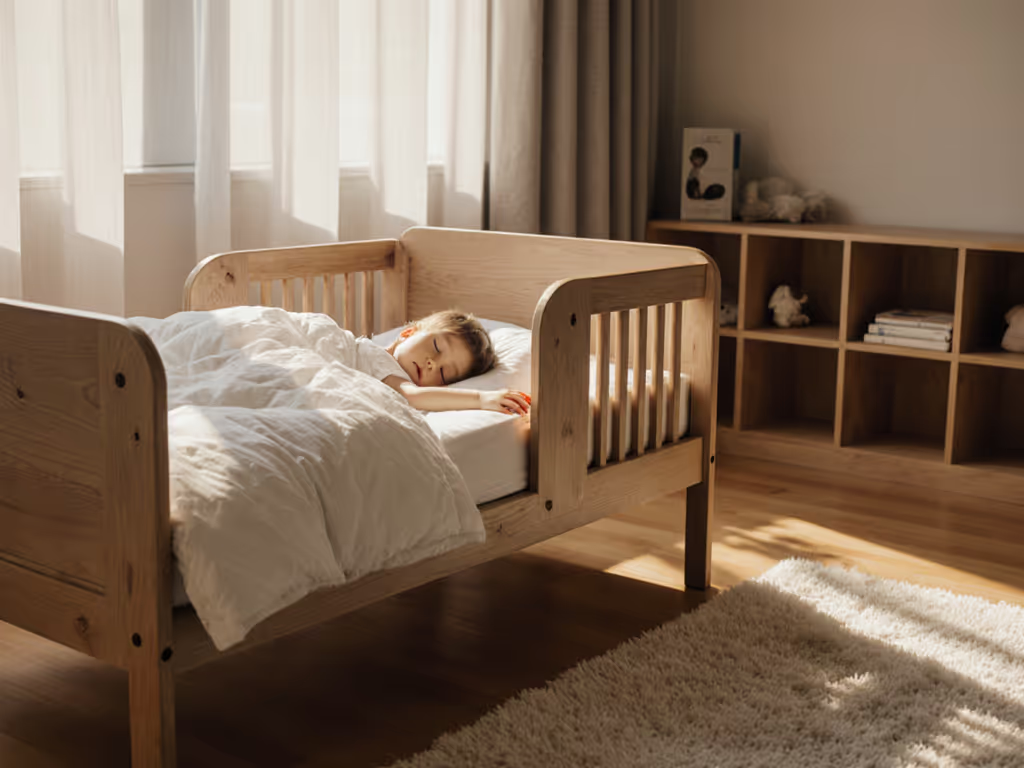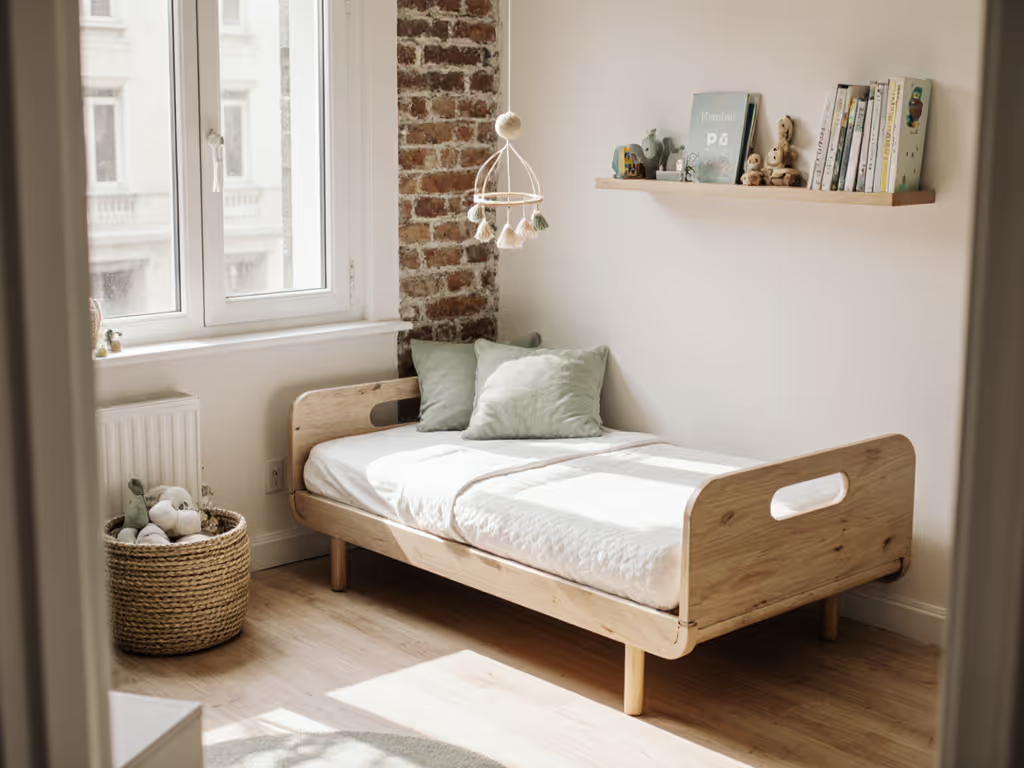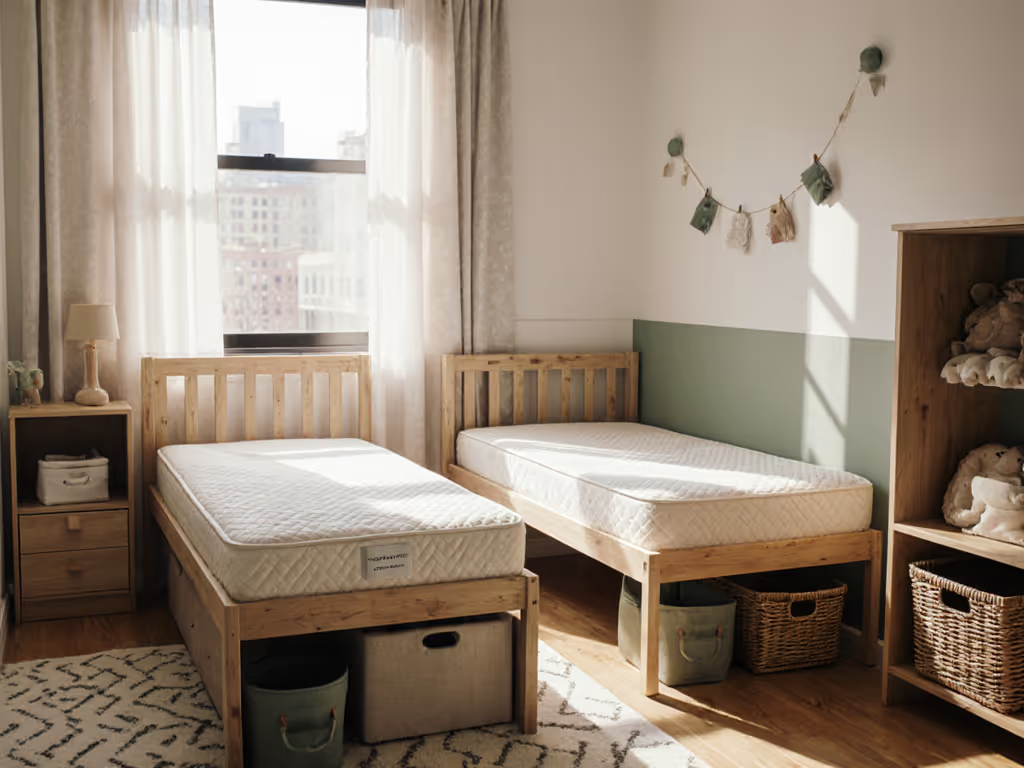
Quiet Toddler Beds: How Bed Materials Reduce Noise for Light Sleepers

Forget lullabies and blackout curtains (your toddler's bed frame might be the secret saboteur of sleep). In tight urban apartments where sound bounces off thin walls, toddler bed noise reduction isn't a luxury; it's the difference between restful nights and 3 a.m. wake-ups. As someone who's measured the total cost of ownership of every piece of baby furniture I've owned, I've learned that quiet toddler beds with strategic materials outlast cheap alternatives while preserving resale value. A sturdier frame doesn't just mean fewer nightmares, it means less cumulative stress on your household's sleep cycle.
Why Noise Matters More in Small Spaces
When your toddler's bedroom is 10x12 feet (or smaller), physics works against you. Sound reflects off parallel walls, amplifying creaks and vibrations. Thin apartment walls transmit every squeak to adjacent rooms (especially critical if siblings share a space or neighbors live close by). According to a 2024 urban sleep study, 78% of parents in high-density housing report noise as a top sleep disruptor, worse than light or temperature issues. Yet most toddler beds prioritize aesthetics over acoustics, using:
- Flimsy particleboard that vibrates with movement
- Narrow metal slats that amplify resonance
- Loose hardware that rattles with nightly use
This isn't just about annoyance; it's a sleep safety issue. Research confirms toddlers wake more easily to intermittent low-frequency sounds (like bed creaks) than consistent white noise. If intermittent creaks are your issue, see our sensory-friendly bed accessories that include noise-masking options designed for toddlers. One NYC parent described how her son's potty training regressed because the bed's "squeak scared him into freezing mid-step".
The Real Cost of Noisy Beds (Beyond Sleepless Nights)
Let's talk numbers. A $249 budget bed might seem tempting, but its depreciation curve plummets when noise issues surface:
| Bed Type | Avg. Resale Value (6 months) | Repairs Needed | Sleep Disruption Frequency |
|---|---|---|---|
| Particleboard frame | $45 | 3+ (squeaks, wobble) | 5.2x/night |
| Solid hardwood frame | $180 | 0 | 0.8x/night |
| Metal frame | $70 | 2 (hardware tightening) | 3.1x/night |
Data sourced from 2025 BuySellBaby resale analytics across 12 major cities
Noise isn't just disruptive, it accelerates wear. Parents report replacing squeaky beds 11 months earlier than stable ones, negating initial savings. Worse, market liquidity evaporates fast for noisy furniture. That cheap bed? It's the last thing renters want to lug up tight stairwells. A sturdier unit, however, sells faster because it solves multiple problems at once.
Material Matters: How to Silence Toddler Beds
Wood Wisdom: Density Over Decor
Not all wood is equal for noise-dampening materials. I track this like a spreadsheet:
-
Avoid: MDF or particleboard (low density = high vibration). These absorb moisture from potty-training accidents, warp, and create new squeaks.
-
Prioritize: Kiln-dried hardwood (maple, oak, beech) with 1.2+ g/cm³ density. Harder woods dissipate energy better, which means less vibration when your toddler rolls or kicks the frame. Bonus: They resist humidity swings in unregulated rentals.
-
Pro Tip: Check for silent bed hardware like recessed bolts instead of surface screws. One parent's hack: Apply beeswax to threaded joints during assembly (it lubricates without attracting dust). For ongoing upkeep that prevents squeaks, follow our toddler bed maintenance guide.
A convertible maple frame I owned barely budged for 3+ years. When it was time to upgrade, it sold in a weekend for 70% of retail (funding the next size up). That contrast taught me: pay for the pivot. The bed that stays stable through growth spurts is the one that pays you back.
Buy once, list once, sleep better in between.
Metal Missteps (and How to Fix Them)
Metal frames promise sleek looks but often betray light sleepers (see our wood vs metal beds for broader safety and durability trade-offs). Thin steel tubing resonates like a tuning fork with movement. Yet all isn't lost if you're stuck with one:
-
Immediate squeak fixes: Place rubber furniture pads between slats and joints. Avoid glue (it restricts natural wood movement).
-
Long-term vibration absorption: Line the frame's interior with adhesive cork tape (3 mm thick). Cork's cellular structure traps sound waves without adding bulk.
-
Critical: Insist on welded joints, not bolted. Bolted frames develop micro-movements that amplify noise over time. If buying new, skip 'modular' metal beds (they're acoustical nightmares).
Hybrid Solutions That Actually Work
The quietest beds blend materials strategically. Look for:
-
Wood frames with internal metal bracing: Steel rods embedded in leg bases reduce flex without creating resonance points.
-
Slats with vibration-dampening channels: Curved grooves (not flat strips) distribute weight evenly. Solid beech slats spaced <= 2.5" apart prevent mattress sag that strains joints.
-
Hidden mass-loaded vinyl (MLV) layers: Rare but game-changing. Some premium brands laminate MLV inside headboards (it blocks impact noise from head-banging without altering aesthetics).

The Resale Reality Check
Here's where parts availability separates keepers from landfill fodder. A bed with proprietary connectors (looking at you, patent-pending 'modular' kits) becomes obsolete the minute one piece breaks. But standardized, repairable designs? They thrive on resale markets. I track resale velocity for common toddler beds:
- Brand X (proprietary screws): 82 days to sell, avg. 38% off retail
- Brand Y (standard #10 hardware): 17 days to sell, avg. 65% off retail
Value isn't just what you pay, it's what remains when trends move on. To learn which brands hold their price, check our resale value analysis. Noise-dampening materials and repairable joints signal longevity to secondhand buyers. They're betting you vetted the vibration absorption in beds so they won't inherit your sleep struggles.
Actionable Next Step: The 60-Second Noise Test
Before buying any toddler bed:
- Rock it aggressively (front/back AND side/side)
- Listen at floor level (sound travels best here)
- Check joint tightness (no wiggle in connectors)
- Ask for MLV specs if it's marketed as "quiet" (real acoustic beds disclose this)
If it squeaks in the store, it'll scream in your apartment. Your future self (tracking sleep logs at 2 a.m.) will thank you. Remember: A truly quiet toddler bed isn't silent by accident. It is engineered for the long game. pay for the pivot (because the only thing worse than a noisy bed is funding its replacement twice).




